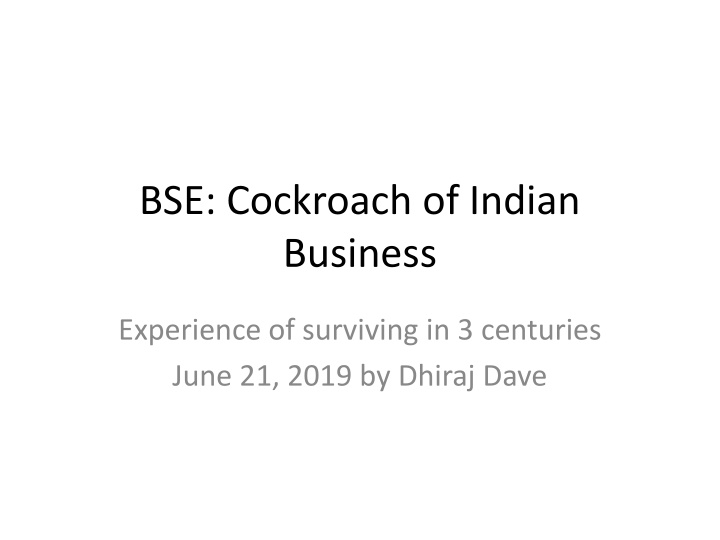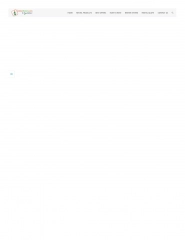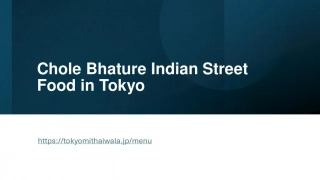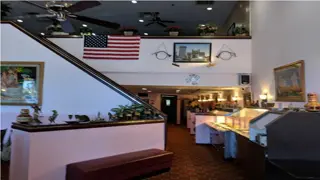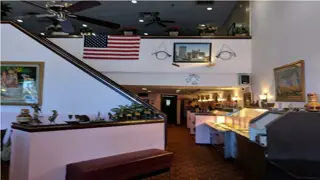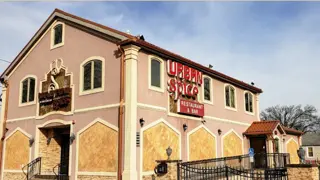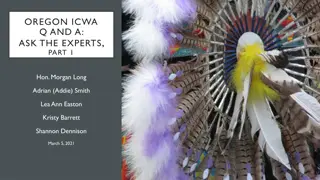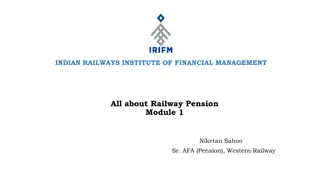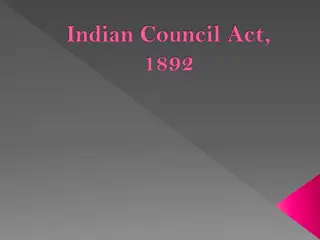BSE: Cockroach of Indian Business - Experience Surviving in 3 Centuries
The Bombay Stock Exchange (BSE) has a rich history dating back to 1875 and has navigated through various challenges over the years. Despite facing competition from NSE in recent times, BSE has been striving to regain its position in the equity market and exploring new business opportunities. The business segments and growth drivers of BSE indicate a potential for expansion and growth. New initiatives like BSE StAR MF platform and insurance broking business reflect the exchange's adaptability and innovation in a rapidly evolving market landscape.
Download Presentation

Please find below an Image/Link to download the presentation.
The content on the website is provided AS IS for your information and personal use only. It may not be sold, licensed, or shared on other websites without obtaining consent from the author.If you encounter any issues during the download, it is possible that the publisher has removed the file from their server.
You are allowed to download the files provided on this website for personal or commercial use, subject to the condition that they are used lawfully. All files are the property of their respective owners.
The content on the website is provided AS IS for your information and personal use only. It may not be sold, licensed, or shared on other websites without obtaining consent from the author.
E N D
Presentation Transcript
BSE: Cockroach of Indian Business Experience of surviving in 3 centuries June 21, 2019 by Dhiraj Dave
Background Started in 1875 as The Native Share & Stock Broker s Association Launch of NSE in 1994 created survival crisis for broker-heavy BSE. NSE have replaced BSE from premium equity exchange over a period with market share in cash equity segment increased to 91% during FY19. 2005 BSE become Corporate entity Trying hard to regain ground in Equity business and also exploring other new business.
Business Segment Rs Crore Linkage FY14 FY19 CAGR% Description Transaction charge Market 29.4 113.9 31.1% Directly linked to market activity Treasury income from Clearing funds Partial Market Linked 43.9 30.7 -6.9% Partial link to market activity since that would lead to more margin being deposited by members Other security services Recurring 26.8 26.9 0.1% Network connection charge from members Service to Corporate Recurring 59.1 213.6 29.3% Mostly from Listing fees, New issues listing is linked to market Data Fees Recurring 20.4 30.2 8.2% Subscription fees, high scope when compared with global peers Investment income Recurring 218.3 202.2 -1.5% Driven by Interest rate Other income Recurring 131.9 70.0 -11.9% Mostly derived from rent and training institute etc., which are stable sources of income Total 529.8 687.5 5.3%
BSE: Market share in various segments Source: BSE presentation May 2019 In traditional listing related business, due to network impact, NSE has advantage. While it is monopoly in equity derivatives, which increase to 91% share in equity cash, and further 2/3 market in Fixed income and Interest rate derivatives, BSE has been able to compete well in new businesses.
Growth drivers: Existing business Data for BSE is only 5% of revenue, With increase share of passive investment, Data income from BSE (particularly Sensex linked fund) may register higher growth as we observe in LSE Transaction income of BSE mainly driven the exclusive securities small cap, traded (which are prominently small cap). In FY19, nearly 56% was from Normal rate From June 1 2019, SEBI has permitted interoperability among Clearing Corporation which necessitate linking of multiple clearing corporation. Since BSE share in Cash market is 9% in FY19 and Equity derivative is near nil, it expects to gain in market share with this change from NSE.
New Initiatives: BSE StAR MF: MF distribution platform, started in 2009, BSE has 79% share as on March 31 2019 which contributed around Rs 29 Cr revenue. Value of order processed increased by 36% while income from segment grown at 194%. Insurance broking business, though JV in company named BSE EBIX Insurance Broking Private Ltd. BSE to hold 40% of equity and approval from IRDA is awaited. BSE also setup a stock exchange and clearing corporation at Gift City, Gandhinagar. India INX (BSE promoted exchange) is the dominant IFSC Exchange in GIFT city with market share of more than 75% in derivatives trading and 80% in debt listing. A joint promoter to power exchange along with PFC and ICICI Band as JV partner which is yet to regulatory approval Entered commodity derivative segment in October 2018. Launched Gold, Silver, Oman Oil, Copper and Cotton contracts.
Demonstrated potential of business BSE Star MF Revenue (Rs Cr) 35 29.1 30 25 20 15 10 7.88 7.43 4.42 5 1.05 0.56 0 14 15 16 17 18 19
Valuation Details Value Rs Cr Rs per share Equity share post buyback 4,72,74,827 Core income FY19 485.30 Expense FY19 433.68 Cash profit 51.62 Tax 5.16 Core Business Cash PAT 46.46 9.83 Core Business Value P/E 25 (A ) 245 CDSL Stake Value Market Cap 2,297.00 BSE Stake 551.28 Discount 40% 220.51 BSE Post Holdco Discount (B) 330.77 70 Cash Equivalent (C) 1,340.00 284 BSE Value (A+B+C) ~600 Optionality of new business with high growth INX/Commodity/ Insurance Broking/ BSE StAR/ Data Dissemination !!! Market price (June 18 2019) 609
Downside protection BSE (67,64,705 shares) through Tender route at price of Rs 680 per share. Even after buyback of Rs 460 Cr, the company would still have unencumbered cash of around Rs 1,340 Cr as on March 31 2019 The company has been distributing more than 90% profit as dividend and hence limited cash requirement for future growth. Current dividend of Rs 30 per share is sustainable in my view and provide dividend yield of around 5% at current price. announced buyback of ~13% equity
Risks NSE uses their revenues coming out of the equity and equity derivatives trading volumes to subsidize other markets which delay revenue making opportunity for BSE. During FY19, Consolidated PAT for NSE was Rs 1,708 Cr vis BSE Consolidated PAT of Rs 199.3 Cr. Given the deep pocket and deep pocket, BSE may take long time to fructify revenue from new ventures in exchange business. NSE is also looking at acquiring MCX. If the merger is approved then BSE would have further challenges as MCX is also have around 90% market share in commodities derivative market. NSE/MCX would have near monopoly in most of derivative business. All the new business are far from making meaningful contribution to BSE cashflow. As highlighted by management during May 2019 Conference call, effort to market MF through BSE StAR platform from 2009 have contributed meaningfully only from FY18, i.e. almost a decade. Further, sustainability of revenue from this business is yet to be assessed which can happen only after major downturn in equity market.
Past Experience: 1946 Stock exchange No of listed companies Paid up value of listed stocks Market capitalisation Rs Cr Bombay 197 271 123.3 Calcutta 576 807 147.5 Madras 192 298 40.6 Ahmedabad 81 82 15.4 Delhi 73 92 72.9 Source: BSE History
Disclaimer I am not SEBI registered advisor BSE among my top 10 holdings. I may also exit this investment in case I find any other attractive opportunity. My view may be biased due to my holding. I am not recommending buy/sell on stock. The objective of presentation is more to explain business and growth driver then valuation. Reader shall consult his/her own investment advisor before making any investment. Reader shall take note of above points.
